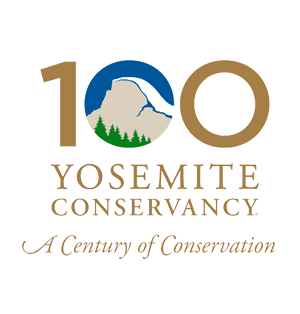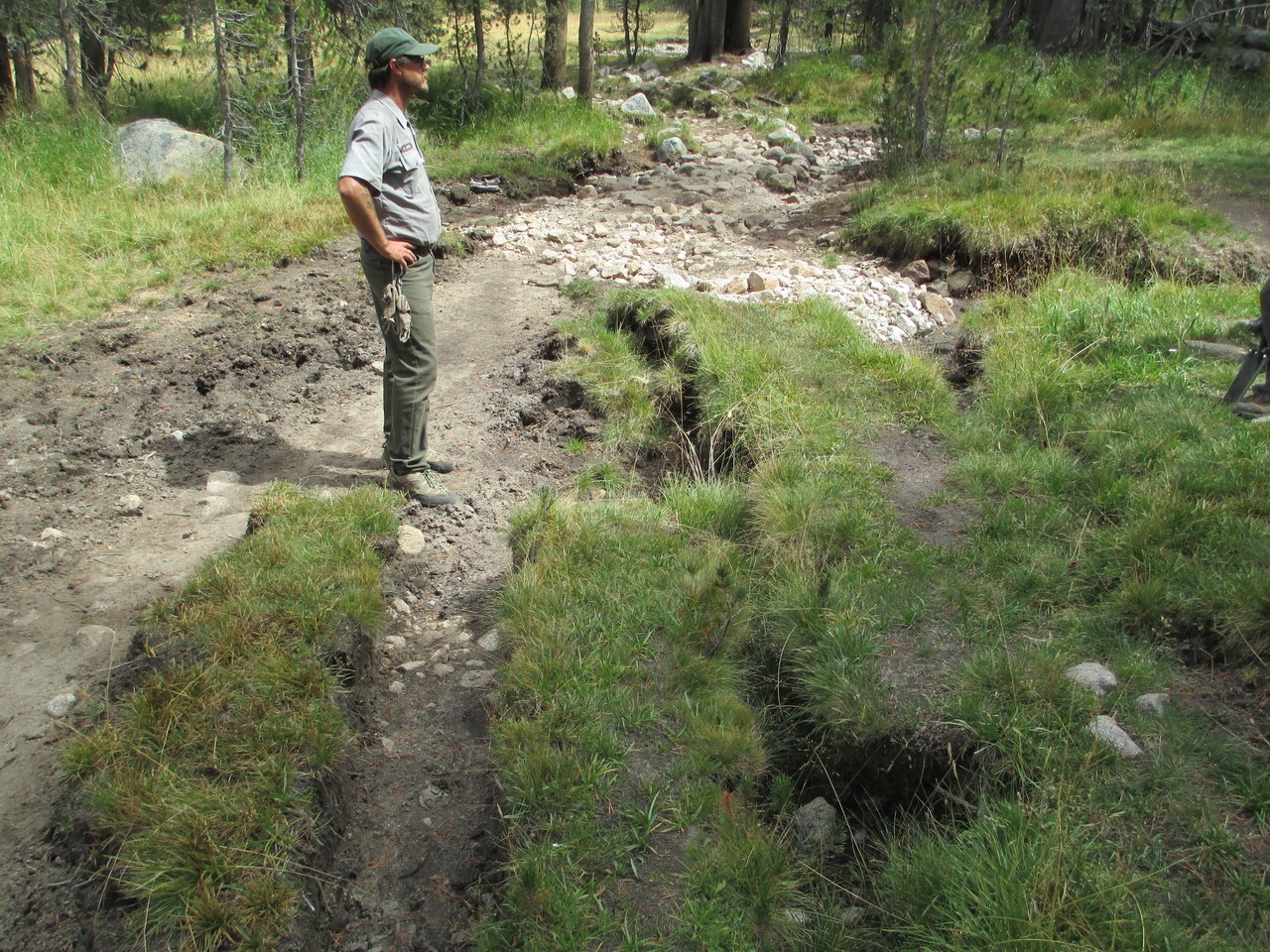The 9-mile section of the popular John Muir Trail/Pacific Crest Trail that runs along the wild and scenic Tuolumne River corridor in Lyell Canyon is one of Yosemite’s summer wilderness highlights. A variety of users access this trail, including backpackers, day hikers and stock animals.
As more people take advantage of the trail to experience Yosemite’s inspiring landscape, foot traffic is increasing. Data from wilderness permits show that 11,423 people used the trail in 2014, 2,000 more than in 2013, and that total is expected to continue climbing.
The original trail was routed through wet sections of Lyell Canyon’s sensitive meadow habitat, which supports a variety of plant and animal species, including the threatened Yosemite toad and the endangered Sierra Nevada yellow-legged frog. Over time, in addition to disrupting the ecological function of the meadow, that original trail prompted the creation of numerous deeply rutted parallel paths as hikers and stock animals attempted to avoid water and mud.
Surveys conducted in 2011 found multiple trail ruts stretching along about 2.5 miles of the Lyell Canyon Trail. Since 2012, Conservancy donors have supported much-needed projects to re-route the original trail and restore meadow habitat in Lyell Canyon. This restoration work, which includes shifting the trail to drier, more resilient areas, loosening compacted soil and revegetating the original trail and ruts, has numerous benefits. In addition to promoting natural water flow, reducing erosion and improving drought resistance in a critical wetland habitat, these projects have created a more sustainable, durable trail with improved drainage. Restoring the meadow, preserving natural processes and building a better trail also help enhance the wilderness experience for all visitors.
Over the course of three years (2012-2014), with the support of Conservancy donors, Yosemite crews and volunteers rerouted more than 4,427 linear feet of trail in Lyell Canyon, and restored nearly 8 acres of wet meadow habitat. Continued funding in 2015 allowed crews to reroute another 1,500 feet of trail, restore an additional 2.75 meadow acres, and conduct surveys of rare plants, wildlife and visitor use to help inform future plans for resource management in Lyell Canyon.
By restoring vital habitat and creating a more enjoyable hiking experience, this donor-supported work in Lyell Canyon preserves a remarkable section of Yosemite’s wilderness, protects native flora and fauna, and encourages visitors to experience, appreciate and steward healthy wetland ecosystems.

